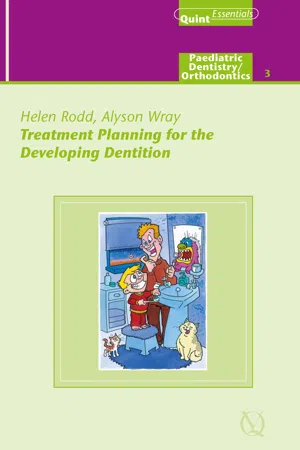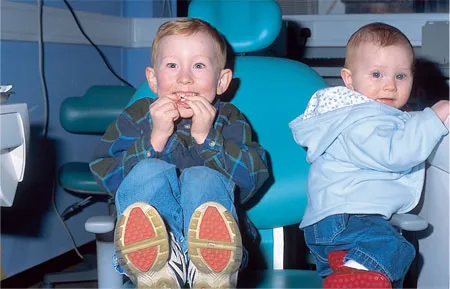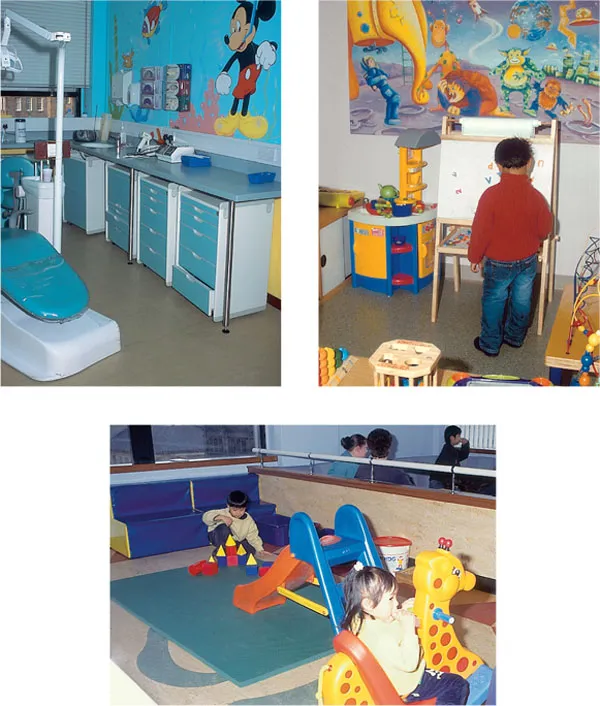
- 150 pages
- English
- ePUB (mobile friendly)
- Available on iOS & Android
eBook - ePub
Treatment Planning for the Developing Dentition
About this book
This book presents the basic principles underlying sound treatment planning for the young patient, whose early experiences can significantly affect future behavior and attitudes. Treatment planning is not merely a sequence of procedures, but should address the individual social, medical, and dental needs of each child.
Frequently asked questions
Yes, you can cancel anytime from the Subscription tab in your account settings on the Perlego website. Your subscription will stay active until the end of your current billing period. Learn how to cancel your subscription.
No, books cannot be downloaded as external files, such as PDFs, for use outside of Perlego. However, you can download books within the Perlego app for offline reading on mobile or tablet. Learn more here.
Perlego offers two plans: Essential and Complete
- Essential is ideal for learners and professionals who enjoy exploring a wide range of subjects. Access the Essential Library with 800,000+ trusted titles and best-sellers across business, personal growth, and the humanities. Includes unlimited reading time and Standard Read Aloud voice.
- Complete: Perfect for advanced learners and researchers needing full, unrestricted access. Unlock 1.4M+ books across hundreds of subjects, including academic and specialized titles. The Complete Plan also includes advanced features like Premium Read Aloud and Research Assistant.
We are an online textbook subscription service, where you can get access to an entire online library for less than the price of a single book per month. With over 1 million books across 1000+ topics, we’ve got you covered! Learn more here.
Look out for the read-aloud symbol on your next book to see if you can listen to it. The read-aloud tool reads text aloud for you, highlighting the text as it is being read. You can pause it, speed it up and slow it down. Learn more here.
Yes! You can use the Perlego app on both iOS or Android devices to read anytime, anywhere — even offline. Perfect for commutes or when you’re on the go.
Please note we cannot support devices running on iOS 13 and Android 7 or earlier. Learn more about using the app.
Please note we cannot support devices running on iOS 13 and Android 7 or earlier. Learn more about using the app.
Yes, you can access Treatment Planning for the Developing Dentition by Alyson P. Wray,Helen D. Rodd in PDF and/or ePUB format, as well as other popular books in Medicine & Dentistry. We have over one million books available in our catalogue for you to explore.
Information
Chapter 1
The First Visit
Aim
In this chapter the importance of introducing a young child to dentistry is emphasised and a strategy for structuring dental treatment is outlined.
Objectives
After reading this chapter the dentist should be able to:
- understand the importance of the child’s early impressions
- plan first visits according to the age of the child
- appreciate the need for a thorough history and clinical examination
- undertake caries risk assessment
- understand the need to initiate a hierarchical treatment plan.
Introduction
Children are the adult dental patients of the future, and good groundwork in the early years of dental monitoring and treatment planning will pay dividends in both the short and long term (Fig 1-1). Furthermore, children are infinitely variable in their behaviour, their development and in their dental needs, and therefore one of the key aims of this book is to establish the importance of individualising treatment planning and dental care.

Fig 1-1 Two pre-school children exploring the dental environment.
There are many reasons why appropriate treatment planning is important – for example, the avoidance of unnecessary treatment such as repeat general anaesthetics or endodontic treatment on a tooth with an unrestorable crown, the facilitation of future interventions, such as retaining roots to maintain alveolar bone, and reduction in stress for operators and patients. It is particularly important with young patients to set easily achievable targets for each visit and for the overall treatment plan. The overall aims of a course of treatment may be very different from those for an adult patient.
First Visit – First Impressions
We are all aware that first impressions can be lasting ones. It is very important that any child’s introduction to dentistry leaves as favourable an impression as possible. This is one of the many reasons why it is so helpful if children begin attending when they have no immediate treatment need. A child who first attends in pain and who may require operative treatment at that visit will have a very different first impression from one who attends symptom-free and only requires a dental examination. For an overview of the approach for a child presenting in pain see Chapter 5.
It is usually beneficial to give children a morning appointment. Although parents may be resistant to this, preferring appointments after school, many young children are tired and hungry at this time of day, and their behaviour is affected accordingly. Seeing young children in the morning, when you are both relatively fresh, is usually more productive.
Wherever possible the practice environment should be child-friendly. Bright decorations, good lighting, simple toys or games in the waiting area go a long way to making a positive first impression. All appointments run late from time to time, but ideally children, in particular anxious ones, should not be kept waiting. If waiting is unavoidable, toys, storybooks and appropriate videos will help to make the wait more pleasant (Fig 1-2).

Fig 1-2 Child-friendly surgery and waiting areas.
Dental practices are very busy places, and it is commonplace for the dentist to stay in the surgery for most of the session and have the dental nurse go to the waiting room to escort the patients to the surgery. This is usually acceptable for adult patients, and those who are very familiar with, and relaxed in, the dental environment. For new, young patients it is much less intimidating if the dentist greets the child in the waiting room, with an accompanying adult close at hand, and then escorts the child into the surgery. Remember that eye contact is very important, in particular at a first meeting. It may be necessary to bend down, or even kneel, to make good eye contact with a small child. Communication involves words (verbal), tone and actions (non-verbal). With children, the verbal component is the least important.
Parent in or out of the Surgery: the Treatment Triangle
Whether or not to have parents in the dental surgery during treatment of their child is an issue most dentists feel quite strongly about. Some advocate always having parents present, others would say never. In reality, it is probably inappropriate to have a hard and fast rule. It is well documented that separation anxiety begins to develop in children around the age of eight or nine months, usually peaks around two to three years of age and for most has dwindled again by the age of five. It would seem reasonable, therefore, to have children accompanied by their parent or carer until the age of three or four, and to make individual decisions about accompaniment from then on (Fig 1-3). A self-confident four-year-old who knows the dentist well will happily sit for a check-up on his or her own. An anxious five-year-old, new to the practice, who needs a first local anaesthetic should, however, have a parent present, provided that the parent has a positive effect on the child’s behaviour.

Fig 1-3 Parental presence is important to reassure very young children in an unfamiliar environment.
It is helpful to establish with the parent that his or her role is to provide support for the child, not to become a communication barrier between the dentist and the patient. An outline of the pros and cons of having parents in the surgery is given in Table 1-1. More detail is given in another volume in this series, Child Taming (see recommended reading).
| Pro | Con |
|
|
The Child is Part of the Family
Before any treatment plan can be drafted, the process of information-gathering must be completed. This can begin even before the first visit, as many children will be part of families already attending the practice. Thus knowledge of the family’s attitude towards dentistry and dental treatment, together with the family history of dental needs, provides a useful base for treatment planning.
Ideally young children should be regular dental attenders as part of family visits from the time of tooth eruption. In reality many children do not attend for dental care until the age of three or four, or until they are experiencing symptoms. Later in this chapter some examples of treatment plans for different age groups are given by way of suggestions for the possible structuring of a series of appointments.
Information Gathering
There are varying opinions regarding the degree of formality appropriate between the dentist and the patient: where children are concerned, it is usually helpful to be informal and to pr...
Table of contents
- Cover
- Title Page
- Copyright Page
- Table of Contents
- Foreword
- Acknowledgements
- Preface
- Chapter 1: The First Visit
- Chapter 2: Interceptive Orthodontic Treatment
- Chapter 3: Planning for Prevention
- Chapter 4: The Restorative Phase of Treatment
- Chapter 5: Management of the Dental Emergency
- Chapter 6: Recall Strategy